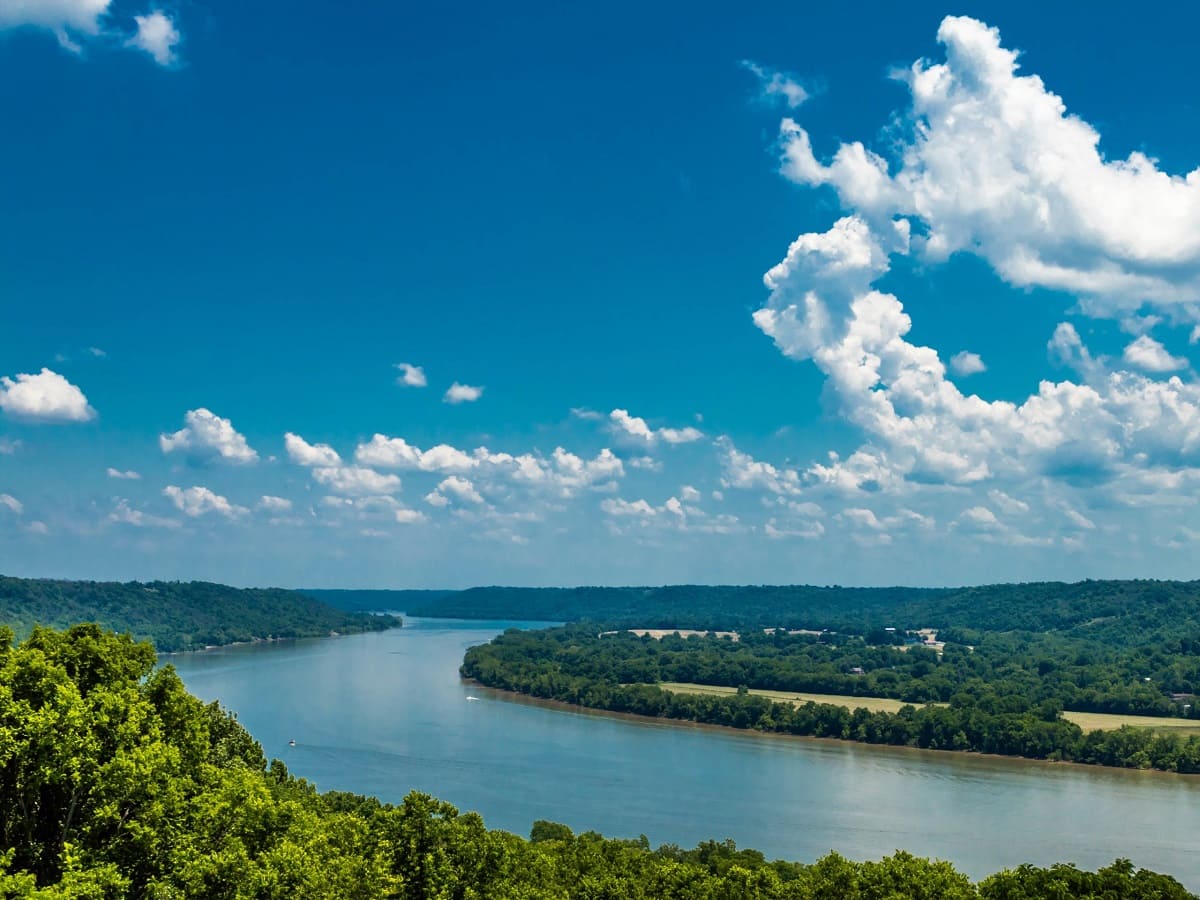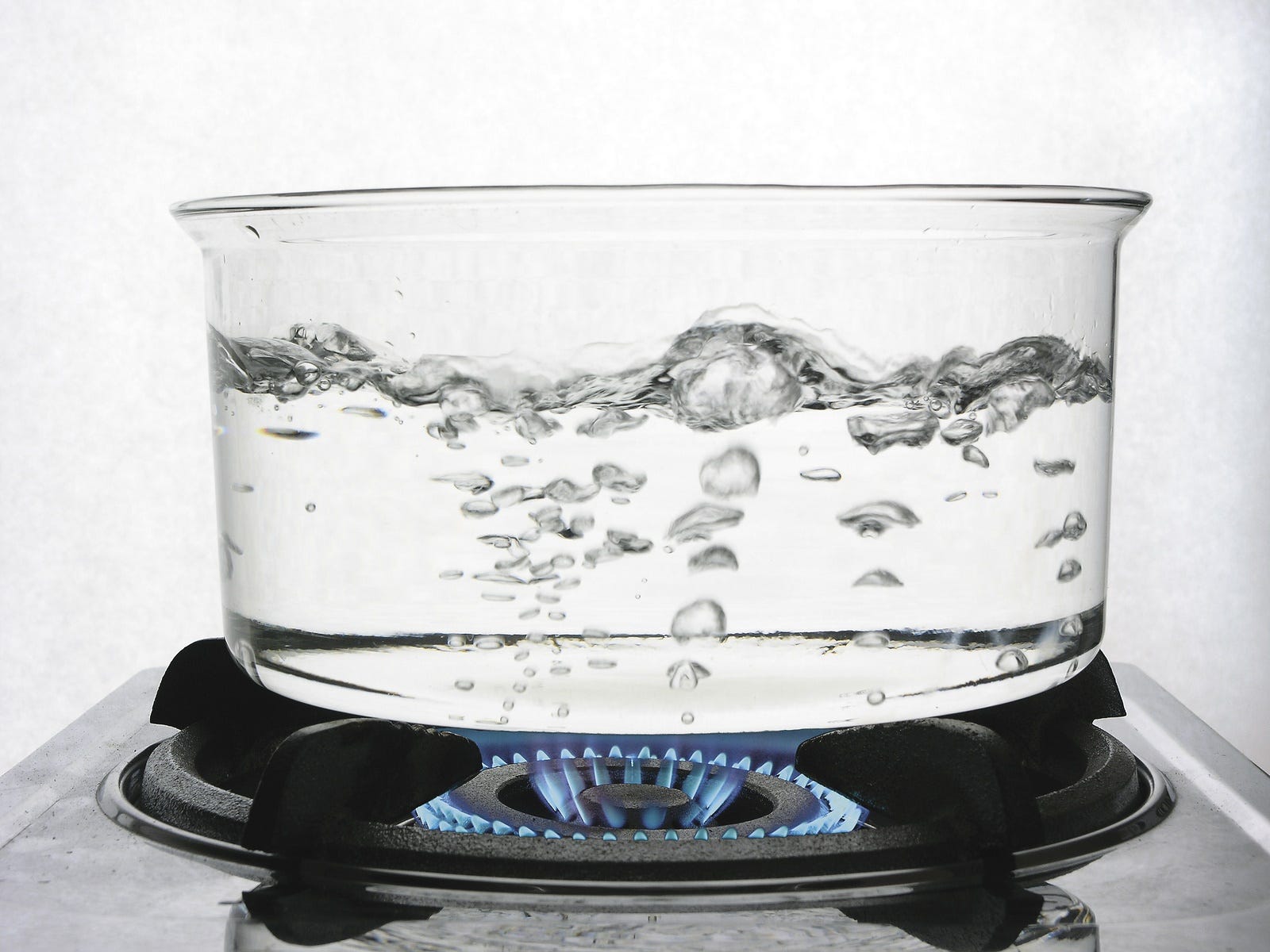Home>Weather and Climate>Ohio River Water Temperature: Insights And Updates


Weather and Climate
Ohio River Water Temperature: Insights And Updates
Modified: June 2, 2024
Stay informed about the Ohio River water temperature with our latest insights and updates on weather and climate. Plan your activities accordingly with accurate information.
(Many of the links in this article redirect to a specific reviewed product. Your purchase of these products through affiliate links helps to generate commission for Temperatures.com, at no extra cost. Learn more)
Table of Contents
Understanding Ohio River Water Temperature
The Ohio River, a vital waterway in the United States, experiences varying water temperatures throughout the year. Understanding these fluctuations is crucial for numerous reasons, including environmental conservation, recreational activities, and industrial operations.
The water temperature of the Ohio River is influenced by a multitude of factors, including seasonal changes, weather patterns, and human activities. During the summer months, the river tends to exhibit higher temperatures due to increased solar radiation and air temperatures. Conversely, in winter, the water temperature decreases as a result of reduced solar radiation and colder air temperatures.
Moreover, the flow of the river and its depth also play significant roles in determining water temperature. Deeper sections of the river tend to have more stable temperatures, while shallow areas are more susceptible to rapid fluctuations. Additionally, the presence of tributaries and the overall water volume can impact the river's thermal characteristics.
Understanding the Ohio River's water temperature is essential for various stakeholders. For instance, wildlife and aquatic ecosystems are highly sensitive to temperature changes. Fish species, in particular, rely on specific temperature ranges for spawning and survival. Therefore, fluctuations in water temperature can directly impact the river's biodiversity and ecological balance.
Furthermore, recreational activities such as boating, fishing, and swimming are influenced by the river's temperature. Warmer water temperatures often attract enthusiasts seeking water-based leisure, while colder temperatures may limit certain activities.
In the industrial sector, the Ohio River's water temperature can affect operations that rely on water for cooling or processing. Understanding the river's thermal profile enables industries to make informed decisions regarding water usage and environmental impact.
In essence, comprehending the nuances of Ohio River water temperature is crucial for environmental stewardship, recreational planning, and industrial sustainability. By monitoring and understanding the factors that influence water temperature, stakeholders can work towards preserving the ecological integrity of the river while supporting diverse human activities.
Factors Affecting Ohio River Water Temperature
The water temperature of the Ohio River is subject to a myriad of influences, encompassing natural phenomena and human activities. Understanding these factors is essential for comprehending the dynamic thermal behavior of the river.
Seasonal Variations
Seasonal changes exert a profound impact on the water temperature of the Ohio River. During the summer months, the river tends to exhibit higher temperatures due to increased solar radiation and warmer air temperatures. The prolonged exposure to sunlight leads to the absorption of heat, elevating the water temperature. Conversely, in winter, the reduced solar radiation and colder air temperatures contribute to a decrease in water temperature. These seasonal fluctuations are integral to the river's ecological processes and the activities of organisms within its ecosystem.
Weather Patterns
Weather patterns, including air temperature, wind, and precipitation, significantly influence the water temperature of the Ohio River. Warm, sunny days contribute to the heating of the water, while cool, overcast conditions can lead to a decrease in temperature. Wind can also impact water temperature by promoting the mixing of surface and deeper waters, thereby influencing the overall thermal profile of the river. Additionally, heavy rainfall can cause rapid fluctuations in water temperature, particularly in shallow areas and tributaries.
Human Activities
Human activities, such as industrial processes, agriculture, and urban development, can contribute to alterations in the Ohio River's water temperature. Industrial discharges and runoff from agricultural areas can introduce pollutants and excess nutrients into the river, potentially affecting its thermal characteristics. Furthermore, urbanization can lead to the modification of natural landscapes, influencing the river's thermal dynamics through changes in land use and water runoff patterns.
Read more: James River Water Temperature: A Guide To The Current Water Temperature Of The James River
River Flow and Depth
The flow and depth of the Ohio River play a pivotal role in determining its water temperature. Deeper sections of the river tend to exhibit more stable temperatures, as they are less susceptible to rapid fluctuations. In contrast, shallow areas are more sensitive to changes in air temperature and solar radiation, leading to more pronounced variations in water temperature. Additionally, the presence of tributaries and the overall water volume can impact the river's thermal behavior, as inflowing water can introduce varying temperatures and alter the river's thermal profile.
Environmental Impact
The interplay of these factors underscores the intricate relationship between the Ohio River's water temperature and its surrounding environment. Fluctuations in water temperature can directly impact the river's biodiversity, aquatic ecosystems, and the overall ecological balance. Understanding these influences is paramount for fostering sustainable management practices and safeguarding the long-term health of the Ohio River.
In essence, the water temperature of the Ohio River is a product of a complex interplay of natural and anthropogenic factors. By comprehensively understanding these influences, stakeholders can work towards preserving the ecological integrity of the river while supporting diverse human activities.
Monitoring and Data Collection Methods
Monitoring and collecting data on the water temperature of the Ohio River is a critical endeavor that involves the utilization of various methods and technologies. These approaches are instrumental in providing comprehensive insights into the river's thermal dynamics and facilitating informed decision-making for environmental management and resource utilization.
On-Site Monitoring
On-site monitoring plays a pivotal role in capturing real-time data on the water temperature of the Ohio River. This method involves the deployment of in-situ sensors and data loggers at strategic locations along the river. These devices are equipped with temperature probes that continuously measure and record the water temperature, providing valuable information on diurnal and seasonal variations. Additionally, on-site monitoring enables the assessment of localized temperature gradients and the impact of specific environmental conditions on the river's thermal profile.
Remote Sensing Technologies
Remote sensing technologies, including satellite imagery and aerial surveys, offer a comprehensive perspective on the spatial distribution of the Ohio River's water temperature. Satellite-based sensors can capture thermal infrared data, allowing for the mapping of surface water temperatures across large geographic areas. This approach facilitates the identification of temperature anomalies, the monitoring of thermal plumes from industrial discharges, and the assessment of temperature variations in response to environmental changes.
Citizen Science Initiatives
Citizen science initiatives play a valuable role in augmenting traditional monitoring efforts by engaging local communities in data collection. Through citizen science programs, volunteers and community members are involved in monitoring water temperature using simple yet effective methods, such as handheld thermometers and temperature logging devices. This grassroots approach not only expands the spatial coverage of data collection but also fosters public awareness and participation in environmental stewardship.
Data Integration and Analysis
The collected data from various monitoring methods are integrated and analyzed using advanced statistical and geospatial techniques. This process involves the aggregation of on-site measurements, remote sensing data, and citizen science observations to develop comprehensive temperature profiles of the Ohio River. Furthermore, data analysis enables the identification of long-term trends, the assessment of thermal impacts on aquatic ecosystems, and the evaluation of the influence of human activities on water temperature dynamics.
Collaborative Research and Partnerships
Collaborative research efforts and partnerships between governmental agencies, research institutions, and environmental organizations play a crucial role in advancing monitoring and data collection methods. By pooling resources and expertise, these collaborations facilitate the implementation of comprehensive monitoring programs, the development of standardized protocols, and the dissemination of data to support evidence-based decision-making and policy formulation.
In essence, the monitoring and data collection methods employed for assessing the water temperature of the Ohio River encompass a diverse array of approaches, ranging from on-site measurements to remote sensing technologies and community engagement. By integrating these methods and fostering collaborative initiatives, stakeholders can gain a holistic understanding of the river's thermal dynamics, thereby supporting sustainable management practices and environmental conservation efforts.
Impacts of Ohio River Water Temperature on Ecosystem
The water temperature of the Ohio River exerts profound influences on its surrounding ecosystem, shaping the behavior, distribution, and survival of various species and contributing to the overall ecological balance. These impacts are multifaceted, encompassing diverse aspects of aquatic life, habitat dynamics, and ecological processes.
Aquatic Biodiversity
The water temperature of the Ohio River plays a pivotal role in regulating the distribution and abundance of aquatic species. Many fish, invertebrates, and other aquatic organisms exhibit specific temperature preferences for spawning, feeding, and growth. Fluctuations in water temperature can disrupt these critical behaviors, potentially impacting the reproductive success and population dynamics of various species. Additionally, temperature variations can influence the metabolic rates of aquatic organisms, affecting their energy requirements and physiological functions.
Habitat Dynamics
The thermal characteristics of the Ohio River directly influence the physical and chemical properties of aquatic habitats. Temperature variations can impact water circulation patterns, dissolved oxygen levels, and nutrient cycling, thereby shaping the overall habitat quality for aquatic organisms. Furthermore, temperature gradients within the river create distinct thermal zones, influencing the spatial distribution of species and the composition of ecological communities. These habitat dynamics are integral to the maintenance of biodiversity and the resilience of the river's ecosystem.
Ecological Processes
The water temperature of the Ohio River profoundly influences key ecological processes, including nutrient cycling, primary productivity, and food web dynamics. Temperature-dependent processes such as photosynthesis, respiration, and nutrient uptake by aquatic plants and algae are directly influenced by water temperature variations. These processes, in turn, impact the availability of resources for other organisms within the ecosystem, ultimately shaping the trophic interactions and energy flow within the river's food web.
Sensitivity to Change
The Ohio River ecosystem exhibits varying degrees of sensitivity to changes in water temperature, with certain species and habitats being more vulnerable to thermal fluctuations. Endemic and specialized species may be particularly sensitive to temperature changes, potentially facing challenges in adapting to rapid shifts in thermal conditions. Furthermore, alterations in water temperature can exacerbate existing environmental stressors, such as pollution and habitat degradation, further impacting the resilience of the ecosystem.
Conservation Implications
Understanding the impacts of water temperature on the Ohio River ecosystem is paramount for informing conservation and management strategies. By recognizing the intricate linkages between temperature dynamics and ecological processes, stakeholders can implement measures to safeguard critical habitats, mitigate the impacts of thermal stress on sensitive species, and promote the overall resilience of the river's ecosystem. Additionally, integrating temperature considerations into environmental assessments and conservation planning enables a more comprehensive approach to preserving the ecological integrity of the Ohio River.
In essence, the impacts of Ohio River water temperature on the ecosystem are far-reaching, influencing the intricate web of life within the river and underscoring the interconnectedness of thermal dynamics and ecological processes. By comprehensively understanding these impacts, stakeholders can work towards fostering a balanced and sustainable coexistence between human activities and the natural environment.
Current Trends and Updates in Ohio River Water Temperature
In recent years, the Ohio River has exhibited notable trends and updates in its water temperature, reflecting the dynamic interplay of environmental factors and human influences. These developments have significant implications for ecological processes, industrial operations, and recreational activities along the river.
One prominent trend is the observed increase in summer water temperatures, attributed to rising air temperatures and prolonged periods of solar radiation. This trend aligns with broader climate patterns, indicating a potential long-term shift in the thermal regime of the river. The elevated summer temperatures have implications for aquatic ecosystems, as they can impact the spawning behavior of fish species and alter the distribution of aquatic organisms within the river.
Furthermore, the Ohio River has experienced fluctuations in water temperature in response to extreme weather events, such as intense rainfall and heatwaves. These events have led to rapid changes in water temperature, particularly in shallow areas and tributaries, underscoring the sensitivity of the river to climatic variability. Such fluctuations can pose challenges for industries reliant on stable water temperatures for cooling and processing operations, necessitating adaptive strategies to mitigate potential impacts.
In addition to natural influences, human activities continue to play a role in shaping the thermal dynamics of the Ohio River. Urbanization, industrial discharges, and agricultural runoff can introduce thermal stressors and alter the thermal characteristics of the river, contributing to localized temperature anomalies and influencing the overall thermal profile. These anthropogenic influences underscore the importance of sustainable water management practices and the integration of temperature considerations into environmental regulations and policies.
Amid these trends, ongoing monitoring efforts have provided valuable updates on the spatial and temporal variations in Ohio River water temperature. Collaborative research initiatives and data collection methods have facilitated the generation of comprehensive temperature profiles, enabling stakeholders to track changes, identify hotspots of thermal stress, and assess the resilience of the river's ecosystem.
As the understanding of Ohio River water temperature continues to evolve, these trends and updates serve as a foundation for informed decision-making and adaptive management strategies. By recognizing the dynamic nature of water temperature trends and their implications, stakeholders can proactively address challenges and opportunities associated with the thermal dynamics of the Ohio River, fostering a balanced approach to environmental stewardship and resource utilization.











